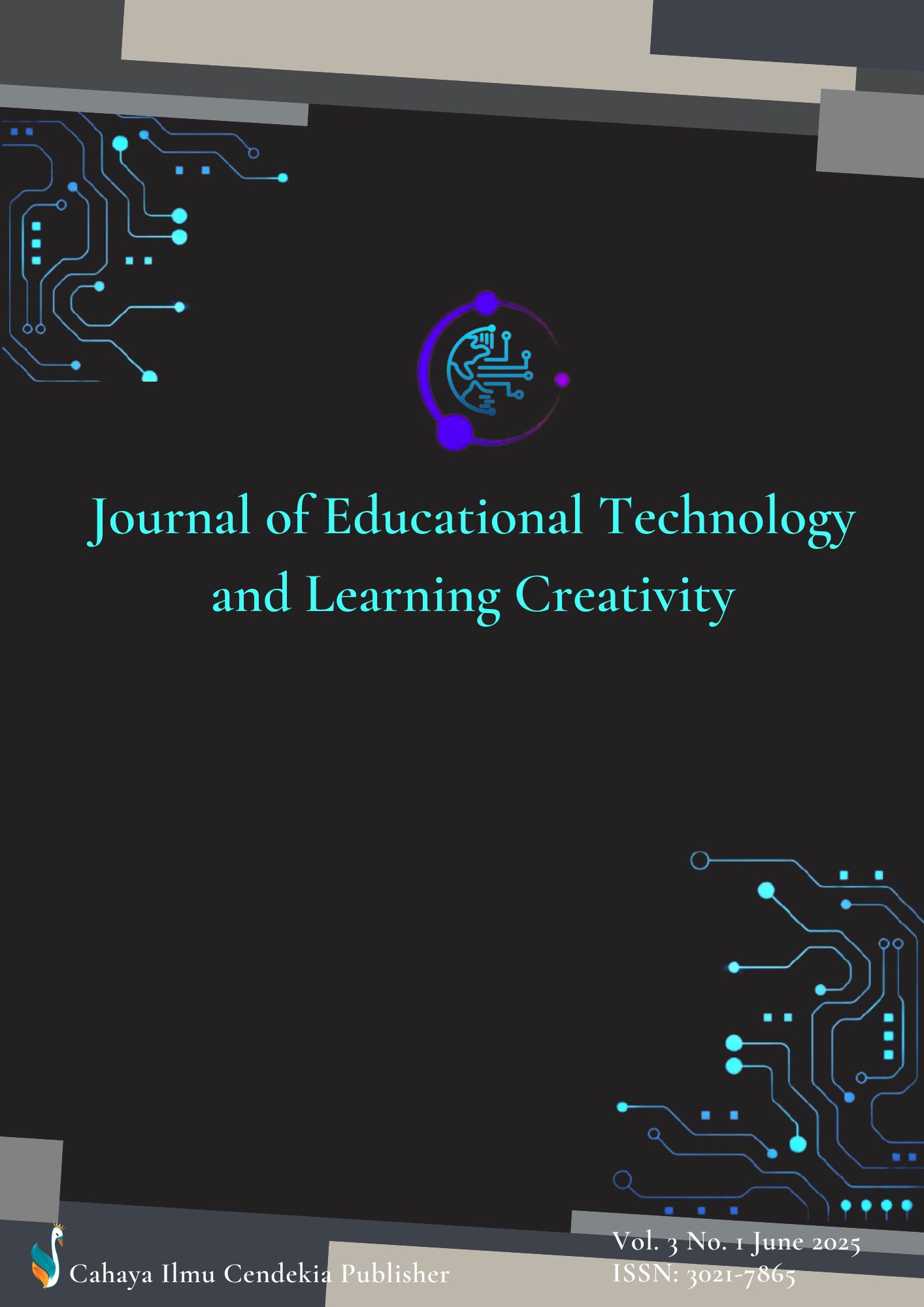New Media, Learning Outcomes, and Social Development of Children: A Case Study of Digital Technology Use in Nigeria
Abstract
Purpose of the study: The development of digital technology has brought about significant changes in the patterns of social interaction and learning outcomes of children, including in developing countries such as Nigeria. This study aims to investigate the impact of new media use on the social interaction and learning outcomes of children aged 8–12 years in Nigeria.
Methodology: Using a mixed-method approach with a sequential explanatory design, data were collected from 220 respondents through questionnaires and in-depth interviews.
Main Findings: The results showed that the majority of children use digital media, such as mobile phones and computers, not only for entertainment but also as a means of learning and social communication. A total of 59.6% of respondents had a good level of media use, while 64.6% demonstrated good social interaction, and 62.3% achieved positive learning outcomes. Regression analysis showed that new media use contributed 64.3% to the variation in children's social interaction and learning outcomes. This study confirms that with proper supervision and direction, digital media can be an effective tool to support children's social and academic development.
Novelty/Originality of this study: These findings have important implications for education policy and the active role of parents and teachers in assisting children's use of digital media.
References
A. Sundqvist, F. S. Koch, U. Birberg Thornberg, R. Barr, and M. Heimann, “Growing up in a digital world–digital media and the association with the child’s language development at two years of age,” Frontiers in psychology, vol. 12, pp. 569920, 2021, doi: 10.3389/fpsyg.2021.569920.
D. Alanko, “The health effects of video games in children and adolescents,” Pediatrics in review, vol. 44, no. 1, pp. 23-32, 2023, doi: 10.1542/pir.2022-005666.
S. O. Slater, L. Arundell, A. Grøntved, and J. Salmon, “Age of first digital device use and screen media use at age 15: A cross-sectional analysis of 384,591 participants from 55 countries,” Public Health in Practice, pp. 100596, 2025, doi: 10.1016/j.puhip.2025.100596.
L. Habeb Al-Obaydi, M. Pikhart, and F. Shakki, “Digital gaming as a panacea for incidental L2 acquisition in an EFL context,” Applied Research on English Language, vol. 12, no. 1, pp. 73-94, 2023, doi: 10.22108/are.2022.135344.2001.
V. J. Clemente-Suárez, A. I. Beltrán-Velasco, S. Herrero-Roldán, S. Rodriguez-Besteiro, I. Martínez-Guardado, A. Martín-Rodríguez, and J. F. Tornero-Aguilera, “Digital device usage and childhood cognitive development: Exploring effects on cognitive abilities,” Children, vol. 11, no. 11, pp. 1299, 2024, doi: 10.3390/children11111299.
A. Blessing, “Media usage, media violence and the Nigerian Child,” Language, Discourse & Society, vol. 10, no. 1, pp. 54-66, 2022.
C. C. Okika, and A. B. Blessing, “Escapism by digital media: Assessing screen time impact, usage guidelines/recommendations awareness and adoption among undergraduate students in Enugu State, South-East Nigeria,” International Journal of Advanced Multidisciplinary Research Reports, vol. 2, no. 1, 2017.
K. A. Korb, “Influence of ICT on Young Nigerian Children’s Development,” International Journal of Arts Education (IJAE), vol. 1, pp. 179-186, 2019.
J. N. Anioke, “Media effects on children’s social and moral development: a theological moral study in Africa,” Cult. Relig. Stud, vol. 5, pp. 113-122, 2017, doi: 10.17265/2328-2177/2017.03.001.
I. Odogwu, “Assessing psychological appeals in digital media animation for education of school age children in select States of North Central Nigeria,” Media and Communication Review, vol. 5, no. 1, pp. 56-82, 2025, doi: 10.32350/mcr.51.04.
D. Apdilah, N. Isnaini, L. K. A. Lubis, P. Azura, and Z. A. Siagian, “Misuse of digital technology to the use of telecommunication industry technology devices used by children,” Universitas, vol. 1, pp. 5, 2022, doi: 10.55047/jhssb.v1i3.145.
F. C. Blumberg, K. Deater‐Deckard, S. L. Calvert, R. M. Flynn, C. S. Green, D. Arnold, and P. J. Brooks, “Digital games as a context for children's cognitive development: Research recommendations and policy considerations,” Social Policy Report, vol. 32, no. 1, pp. 1-33, 2019, doi: 10.1002/sop2.3.
H. L. Kirkorian, E. A. Wartella, and D. R. Anderson, “Media and young children’s learning,” The Future of children, pp. 39-61, 2008, doi: 10.1353/foc.0.0002.
D. A. Bukhalenkova, E. A. Chichinina, and O. V. Almazova, “How does joint media engagement affect the development of executive functions in 5to-7 year-old children?,” Psychology in Russia: State of the art, vol. 16, no. 4, pp. 109-127, 2023, doi: 10.11621/pir.2023.0407.
S. Ma, J. Li, and E. E. Chen, “Does screen media hurt young children’s social development? Longitudinal associations between parental engagement, children’s screen time, and their social competence,” Early Education and Development, vol. 35, no. 1, pp. 10-25, 2024, doi: 10.1080/10409289.2022.2151401.
E. Staksrud, K. Ólafsson, and S. Livingstone, “Does the use of social networking sites increase children’s risk of harm?,” Computers in human behavior, vol. 29, no. 1, pp. 40-50, 2023, doi: 10.1016/j.chb.2012.05.026.
S. Livingstone, “Developing social media literacy: how children learn to interpret risky opportunities on social network sites,” Communications, vol. 39, no. 3, pp. 283-303, 2014, doi: 10.1515/commun-2014-0113.
L. H. Somerville, “The teenage brain: Sensitivity to social evaluation,” Current directions in psychological science, vol. 22, no. 2, pp. 121-127, 2013, doi: 10.1177/0963721413476512.
C. Korkut, “Television technique in new media,” Gümüşhane Üniversitesi İletişim Fakültesi Elektronik Dergisi, vol. 10, no. 1, pp. 469-493, 2022, doi: 10.19145/e-gifder.1060711.
M. W. M. Al-Quran, “Traditional media versus social media: challenges and opportunities,” Technium: Romanian Journal of Applied Sciences and Technology, vol. 4, no. 10, pp. 145-160, 2022, doi: 10.47577/technium.v4i10.8012.
N. M. El Madja, “New media and social construction of technology (SCOT) on cak ed online delivery service in Lamongan regency,” Muharrik: Jurnal Dakwah dan Sosial, vol. 4, no. 1, pp. 79-95, 2021, doi: 10.37680/muharrik.v4i01.819.
E. M. Aondover, A. P. Okuneye, and T. E. Onyejelem, “Application of new media in peace building and conflict resolution in Nigeria,” Journal of African Conflicts and Peace Studies, vol. 6, no. 1, pp. 8, 2024.
C. W. Chang, and S. H. Chang, “The impact of digital disruption: influences of digital media and social networks on forming digital natives’ attitude,” Sage Open, vol. 13, no. 3, 2023, doi: 10.1177/21582440231191741.
H. Albadri, “The convergence of traditional media to the digital communicative environment-the reality and gap,” Information Sciences Letters, vol. 12, no. 4, pp. 1827-1839, 2023.
S. H. Liao, R. Widowati, and Y. C. Hsieh, “Investigating online social media users’ behaviors for social commerce recommendations,” Technology in Society, vol. 66, pp. 101655, 2021, doi: 10.1016/j.techsoc.2021.101655.
V. Sundararaj, and M. Selvi, “Opposition grasshopper optimizer based multimedia data distribution using user evaluation strategy,” Multimedia Tools and Applications, vol. 80, no. 19, pp. 29875-29891, 2021, doi: 10.1007/s11042-021-11123-4.
M. M. Nasralla, S. B. A. Khattak, I. Ur Rehman, and M. Iqbal, “Exploring the role of 6G technology in enhancing quality of experience for m-health multimedia applications: a comprehensive survey,” Sensors, vol. 23, no. 13, pp. 5882, 2023, doi: 10.3390/s23135882.
S. Du, N. Hashim, and S. Kamarudin, “Unraveling the social media experience: a captivating exploration of uses and gratifications theory,” International journal of academic research in business & social sciences, vol. 13, no. 12, pp. 850-874, 2023.
J. M. Haile, “Social media for diffusion of conflict & violence in Ethiopia: beyond gratifications,” International Journal of Educational Development, vol. 108, pp. 103063, 2024, doi: 10.1016/j.ijedudev.2024.103063.
S. Syafira, and B. S. Dharmmesta, “Video-On-Demand streaming services subscription antecedents and consequences: the uses and gratifications theory approach,” Journal of Indonesian Economy and Business, vol. 39, no. 3, pp. 256-281, 2023, doi: 10.22146/jieb.v39i3.8176.
F. H. Pakpahan, and M. Saragih, “Theory of cognitive development by Jean Piaget,” Journal of Applied Linguistics, vol. 2, no. 1, pp. 55-60, 2022, doi: 10.52622/joal.v2i2.79.
A. R. Hutasuhut, and D. Armanto, “Meta analysis of mathematical learning participants according to Piaget Theory,” Jurnal Ilmiah Wahana Pendidikan, vol. 8, no. 24, pp. 150-159, 2022, doi: 10.5281/zenodo.7476874.
J. Zhang, “The influence of piaget in the field of learning science,” Higher Education Studies, vol. 12, no. 3, pp. 162-168, 2022, doi: 10.5539/hes.v12n3p162.
M. Makita, A. Mas-Bleda, E. Stuart, and M. Thelwall, “Ageing, old age and older adults: a social media analysis of dominant topics and discourses,” Ageing & Society, vol. 41, no. 2, pp. 247-272, 2021, doi: 10.1017/S0144686X19001016.
E. Humprecht, L. Castro Herrero, S. Blassnig, M. Brüggemann, and S. Engesser, “Media systems in the digital age: an empirical comparison of 30 countries,” Journal of Communication, vol. 72, no. 2, pp. 145-164, 2022, doi: 10.1093/joc/jqac010.
J. Torous, S. Bucci, I. H. Bell, L. V. Kessing, M. Faurholt‐Jepsen, P. Whelan, ... and J. Firth, “The growing field of digital psychiatry: current evidence and the future of apps, social media, chatbots, and virtual reality,” World Psychiatry, vol. 20, no. 3, pp. 318-335, 2021, doi: 10.1002/wps.20883.
B. Ebenso, B. Okusanya, K. Okunade, D. Akeju, A. Ajepe, G. O. Akaba, ... and M. J. Allsop, “What are the contextual enablers and impacts of using digital technology to extend maternal and child health services to rural areas? Findings of a qualitative study from Nigeria,” Frontiers in Global Women's Health, vol. 2, pp. 670494, 2021, doi: 10.3389/fgwh.2021.670494.
P. O. Vitalis, E. M. Aondover, O. Ogunbola, T. E. Onyejelem, and M. Ridwan, “Accessing digital divide and implications in Nigeria: the media dimension,” Budapest International Research and Critics Institute-Journal (BIRCI-Journal), vol. 8, no. 1, pp. 1-12, 2025, doi: 10.33258/birci.v8i1.8017.
D. O. Okocha, and E. Edafewotu, “Bridging the digital divide in Nigeria,” The Journal of development communication, vol. 33, no. 1, pp. 45-54, 2022.
J. M. Maikomo, T. S. Targema, and M. K. Obun-Andy, “COVID-19 and the new normal in developing societies: an appraisal of Nigerians’ adaptation to digital life in public and private spheres,” Journal of Developing Societies, vol. 37, no. 3, pp. 246-274, 2021, doi: 10.1177/0169796X21996830.
Y. A. Pinem, and A. D. Rahmawan, “Elements of digital media in vocabulary remote-learning achievement,” International Journal of Evaluation and Research in Education, vol. 12, no. 2, pp. 893-904, 2023, doi: 10.11591/ijere.v12i2.22923.
S. Avsec, and M. Jagiełło-Kowalczyk, “Investigating possibilities of developing self-directed learning in architecture students using design thinking,” Sustainability, vol. 13, no. 8, pp. 4369, 2021, doi: 10.3390/su13084369.
A. Saleem, H. Kausar, and F. Deeba, “Social constructivism: a new paradigm in teaching and learning environment,” Perennial journal of history, vol. 2, no. 2, pp. 403-421, 2021, doi: 10.52700/pjh.v2i2.86.
P. M. Valkenburg, and J. Peter, “Social consequences of the internet for adolescents: a decade of research,” Current directions in psychological science, vol. 18, no. 1, pp. 1-5, 2009, doi: 10.1111/j.1467-8721.2009.01595.x.
N. Rudnova, D. Kornienko, Y. Semenov, and V. Egorov, “Characteristics of parental digital mediation: predictors, strategies, and differences among children experiencing various parental mediation strategies,” Education Sciences, vol. 13, no. 1, pp. 57, 2023, doi: 10.3390/educsci13010057.
X. Liu, S. Geng, T. Lei, Y. Cheng, and H. Yu, “Connections between parental phubbing and electronic media use in young children: the mediating role of parent–child conflict and moderating effect of child emotion regulation,” Behavioral Sciences, vol. 14, no. 2, pp. 119, 2024, doi: 10.3390/bs14020119.
L. Chen, X. Liu, and H. Tang, “The interactive effects of parental mediation strategies in preventing cyberbullying on social media,” Psychology Research and Behavior Management, pp. 1009-1022, 2023, doi: 10.2147/PRBM.S386968.
L. Plowman, O. Stevenson, C. Stephen, and J. McPake, “Preschool children’s learning with technology at home,” Computers & Education, vol. 59, no. 1, pp. 30-37, 2012, doi: 10.1016/j.compedu.2011.11.014.
P. A. Kirschner, and A. C. Karpinski, “Facebook® and academic performance,” Computers in human behavior, vol. 26, no. 6, pp. 1237-1245, 2010, doi: 10.1016/j.chb.2010.03.024.
P. Lorenz-Spreen, L. Oswald, S. Lewandowsky, and R. Hertwig, “A systematic review of worldwide causal and correlational evidence on digital media and democracy,” Nature human behaviour, vol. 7, no. 1, pp. 74-101, 2023, doi: 10.1038/s41562-022-01460-1.
D. Caled, and M. J. Silva, “Digital media and misinformation: an outlook on multidisciplinary strategies against manipulation,” Journal of Computational Social Science, vol. 5, no. 1, pp. 123-159, 2022, doi: 10.1007/s42001-021-00118-8.
C. K. Y. Chan, and W. Hu, “Students’ voices on generative AI: perceptions, benefits, and challenges in higher education,” International Journal of Educational Technology in Higher Education, vol. 20, no. 1, pp. 43, 2023, doi: 10.1186/s41239-023-00411-8.
Copyright (c) 2025 Queen Nwoji, Bashiru Aliyu Gada, Zahra Mohmmed Alqahtani

This work is licensed under a Creative Commons Attribution 4.0 International License.
Authors who publish with this journal agree to the following terms:
- Authors retain copyright and acknowledge that the Journal of Educational Technology and Learning Creativity is the first publisher licensed under a Creative Commons Attribution 4.0 International License.
- Authors are able to enter into separate, additional contractual arrangements for the non-exclusive distribution of the journal's published version of the work (e.g., post it to an institutional repository or publish it in a book), with an acknowledgment of its initial publication in this journal.
- Authors are permitted and encouraged to post their work online (e.g., in institutional repositories or on their website) prior to and during the submission process, as it can lead to productive exchanges and earlier and greater citation of published work.


.png)


.png)
.png)
.png)












